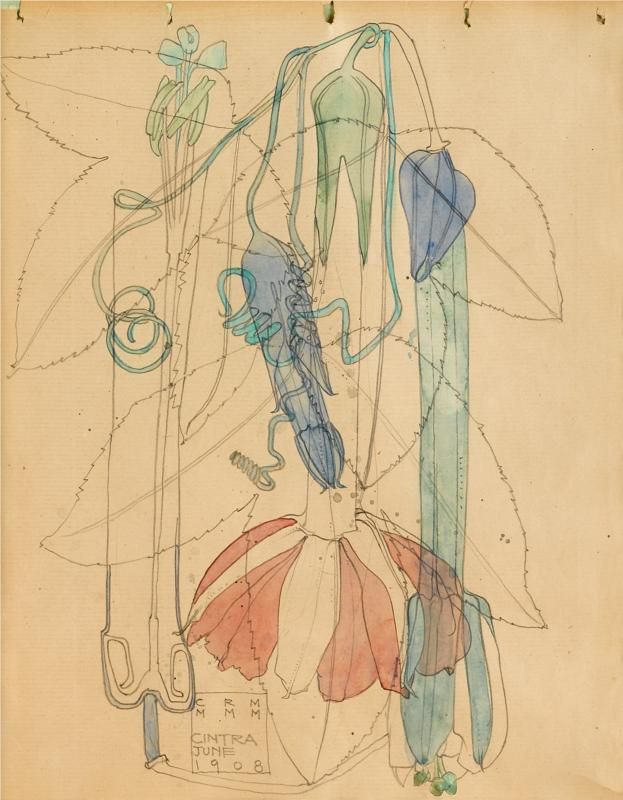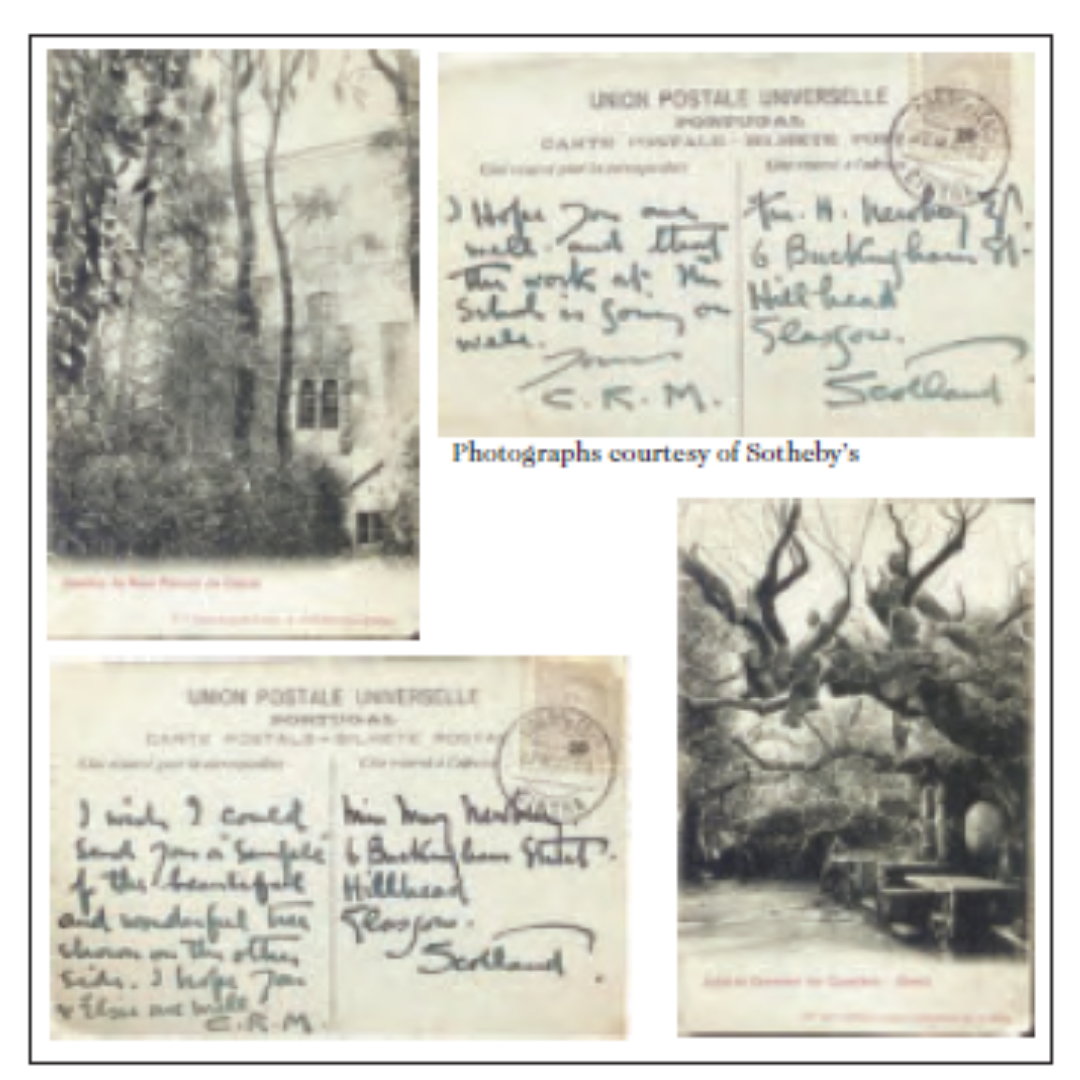Happy Birthday Mackintosh! Celebrating 152 Years with a reflection on Sintra
On Sunday the 7th of June 2020 we celebrate the 152nd anniversary of Mackintosh’s birth!
The CRM Society would normally be hosting physical events in celebration, and though this is not possible this year, we would like to take the opportunity to remember his legacy. We reflect on a piece from the Journal archives from 2008 written by Marisa Herrero Membrado, an art historian and CRM Society member.
112 years ago, in May of 1908, Mackintosh would have arrived in Sintra in Portugal. In all of the literature on Mackintosh, very little has been written about a journey he made to Portugal with Margaret. They would have arrived in Sintra when Mackintosh was 40 years of age, and Margaret 44.
We know that 1908 was not an easy year for Mackintosh so was this perhaps a special birthday getaway? We do not know, but we do know that the only professional commissions were the extension to the Glasgow School of Art with the Library Wing and the entrance to the Lady Artist’s Club in Blythswood Square. His father had died on the 10th of February, and a few months later the Mackintosh’s set off for Sintra. There is no information about whether they visited other places in Portugal and we do not know the exact reasons why Mackintosh chose to spend his time in this small town, 24 kilometres from Lisbon.
All that remains from his trip are few sketches and drawings, a botanical watercolour painting (Tacsonia) signed with the couple’s joint initials CRM/MMM in June, and two postcards sent on the 22nd of May, one of them to Fra H Newberry (Janelas do Real Palacio de Cintra) and the other to Miss May Newbery (Atrio do Convento dos Capuchos) 4 in which he stated his intention to draw the tree appearing on the front of the card.


While the Mackintoshes were in Sintra, the Italian architect and stage designer Luigi Manini was building the Quinta da Regaleira (1904-1910), another of the major buildings in this Portuguese town. It is not known whether Mackintosh was in contact with Manini, or if he visited to study this particular architect’s work.
A year after Mackintosh’s visit to Sintra, in 1909, Mackintosh’s architectural career/reputation began to go into decline. His fame as an Art Nouveau artist had dwindled as contemporary European architecture developed along more classical lines and as public taste changed. Mackintosh was no longer receiving commissions. At a certain point in his life, for very complex reasons, he cut himself off from the artistic circles in which the European art of the moment was opening up new directions. In 1913 Mackintosh had left the firm Honeyman & Keppie and moved to England. His last major commission, for W. J. Bassett-Lowke, was to renovate the early 19th-century terraced house at 78 Derngate (1916–1919) in Northampton.
Today, Sintra has become recognised as a primary site of Iberian Romantic architecture in Europe. In 1995 it was listed as a UNESCO World Heritage Site for its natural and architectural legacy, with over two hundred types of trees, two thousand different plant species and its exuberant Romantic-style buildings.
It is unclear whether this trip marked a turning point for Mackintosh but we imagine that he and Margaret would have enjoyed the naturalist architecture, and it’s cosmopolitan yet ‘Magical and Fairytale’ like atmosphere and an opportunity to sketch their surroundings. It was not long after they returned and were living is Walberswick, Suffolk that Mackintosh created a series of botanical watercolour paintings. Could his trip to Sintra have reignited his love of botanical painting?
We hope you enjoyed this insight into Mackintosh’s past and will join us in celebrating the 152nd anniversary. If you would like to read the full text, you can access it here: A View of Sintra

